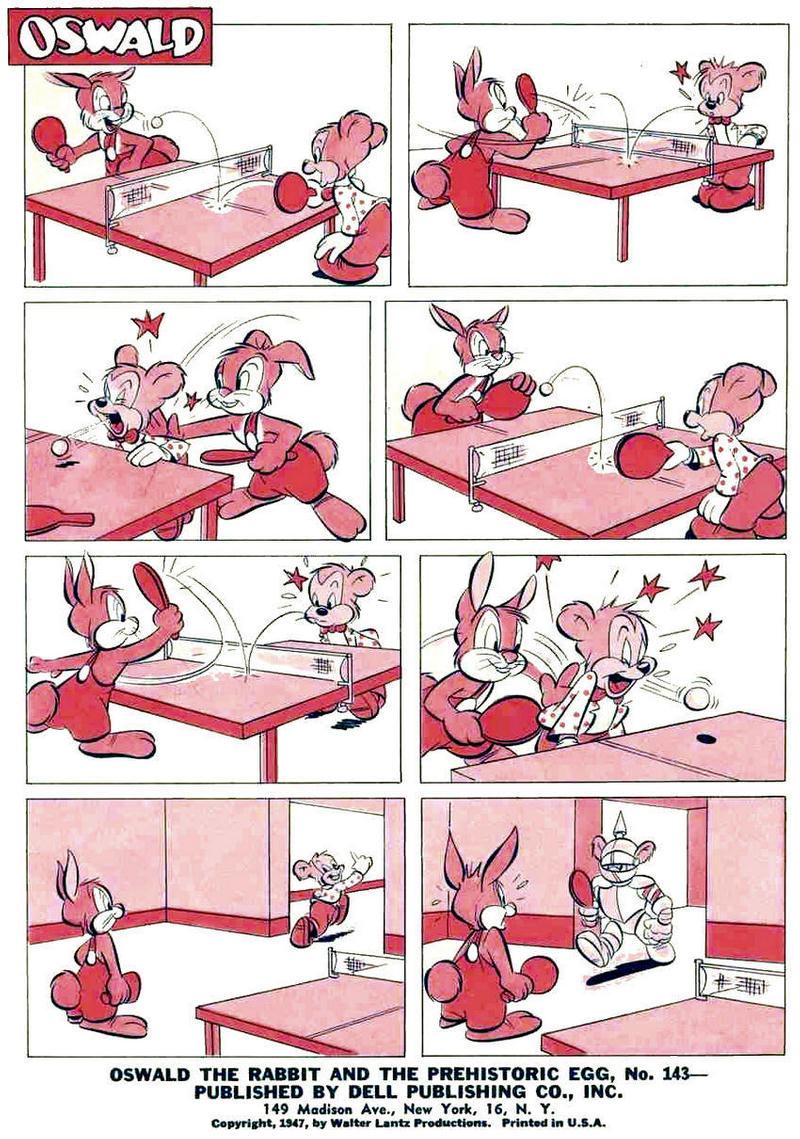It’s Easter Sunday, and so I scrambled to find a story with an Easter egg (ho-ho). Lame joke aside, I present this epic adventure of Oswald the Rabbit, his buddy Toby, and their adventures in a babeland inside the Earth, from Dell’s Four Color #143 (1947).
Sexy little cartoon girls in an all-female society were not what I was expecting in a kiddie comic from the 1940s, but the unexpected is to be expected in any comic book written by John Stanley. Stanley pulls out the stops in this story, extending the idea of a pretty young queen with the addition of an old queen, and even an old old queen. Stanley had one of the most inventive minds of any comics creator.
Art is by Dan Gormley, a prolific comic book artist about whom not much is known. At least we know what he looked like thanks to this photo from Frank Young’s Stanley Stories blog.






















































3 comments:
It will be known to many here — but perhaps not to all — that this Oswald is what came of Oswald the Lucky Rabbit, who began as something of an imitation of Felix the Cat. Oswald was created by Ub Iwerks and Walt Disney, but taken from them by Charles B. Mintz, who then found the character taken from him by Carl Laemmle.
Iwerks and Disney cloned Oswald to create Mickey Mouse. Oswald and Mickey subsequently evolved into very different characters (from each other, and from Felix for that matter). Eventually, well after the deaths of Iwerks and of Disney, the Disney Company bought the rights to Oswald.
Daniel, I didn't know that Oswald was bought back by Disney...for historic reasons?
I tend to think of the Disney Corporation now as being something of a huge vacuum cleaner, picking up things alone the way, businesses, other peoples' ideas, etc.
The Disney Company represents the purchase of Oswald as a consolidation of the legacy of Walt Disney. As Roy E. Disney (son of Roy O. Disney) was still alive when this was done, and he'd been keen on such things, it might have been done to please him. Or it might just have been a bee in Iger's bonnet. Possibly, it was a way of quieting those who objected to the company's aggressive protection of its intellectual property given, as it was claimed, that Mickey Mouse began a clone of intellectual property legally belonging to Universal Studios.
Indeed, Disney seems to have become an entertainment holdings company.
Post a Comment